How to identify vintage Pendleton tags by age?
ペンドルトンのビンテージタグの年代別の判別方法
PENDLETON WOOLEN MILLS TAG HISTORY

BLANKET TAG
1900s - 1920s
First name tag


©PENDLETON WOOLEN MILLS 1915 CATALOG
The photographs used as reference were not in very good condition and may be half inaccurate with regard to this figure. It is almost certainly the first Pendleton logo tag made. The book states that it says “guarantee to be a pendleton” instead of “warranted to be a pendleton”, which is usually written from now on, but as the photo is unclear (and damaged), it will take some time to clarify. It also features “PURE FREECE WOOL” as it is a blanket tag. This is the thinnest tag. Furthermore, there is some text under the Pendleton mark, but it is unclear whether it is 100% wool, HANDMADE or, like the other tags, “pendleton woolen mills”, which is currently not known. It is currently unknown whether it is 100% wool, HANDMADE or “pendleton woolen mills” like other tags.
参考にした写真の状態があまり良くなかったために、不明瞭な点がありこの図に関しては半分推測も入っているため不正確かもしれない。しかしこの形で最初に作られたペンドルトンのロゴ・タグであることはほぼ間違いないと思われる。また参考文献によれば、「guarantee to be a pendleton」になっておりこの後歴代続く “warranted to be a pendleton”」かもしれない。写真が不鮮明(かつ傷んでいる)なので、はっきりさせるにはもう少し鮮明な資料が必要であろう。ブランケットなので「PURE FREECE WOOL」と記されています。これは最も縦幅が薄いタグのタグです。さらにペンドルトン・マークの下に文字があるように見えるだが、それがウール100%なのか、HANDMADEなのか、他のタグと同じく「PENDLETON WOOLEN MILLS」なのか、もしくは単なる汚れなのかは今のところ不明です。(fromと判別しました)
1920s - 1930s






The “Cayuse” are a Native American tribe in what is now the state of Oregon in the United States. The Cayuse tribe shares a reservation and government in northeastern Oregon with the Umatilla and the Walla Walla tribes as part of the Confederated Tribes of the Umatilla Indian Reservation. The reservation is located near Pendleton, Oregon, at the base of the Blue Mountains. As white settlers moved into their territory in large numbers following the opening of the Oregon Trail in 1842, the Cayuse suffered. Even settlers passing through competed with them for game and water. Crowds of whites invaded the region during the California Gold Rush beginning in 1848 and when gold was discovered in Eastern Oregon in 1862.The Cayuse Indians were located in the Columbia Basin and were nomadic, sometimes moving on a daily basis. They lived in teepees, which many nomadic tribes used for portability. The Cayuse were skilled horsemen, and used horses in hunting. They also used them for their trip over the Rocky Mountains each year to hunt a supply of buffalo to bring back for their families. The men hunted game and fished salmon. The women gathered and picked berries and dug and processed roots. The women also processed the animal skins to make materials for shelter and clothing. The men considered bravery to be an important quality, with brave warriors being held in high esteem. The strongest would be made chief.


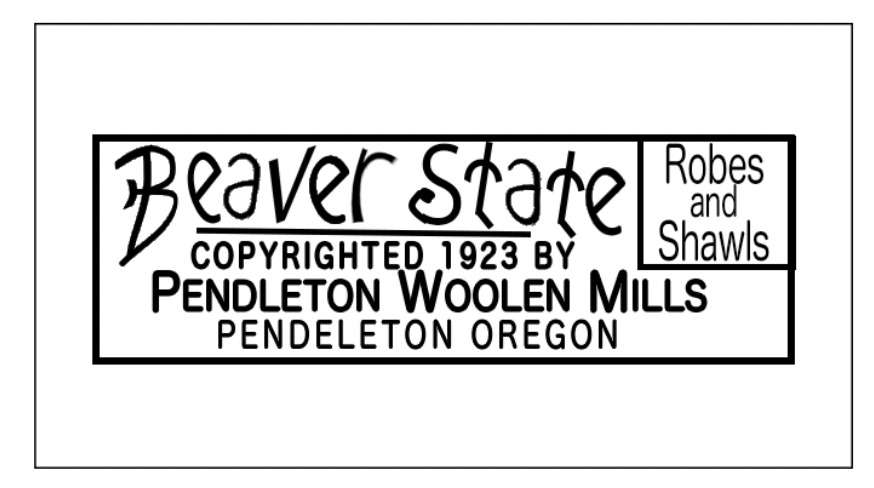



1930s - 1940s





1930 – 1972

Around this year, the name tag was changed because the patent expired. Otherwise, the design is the same. In 1932, Pendleton was awarded the commission to produce a special blanket for Olympic athletes.
SHIRT TAG from 1924
1924 - 1930s


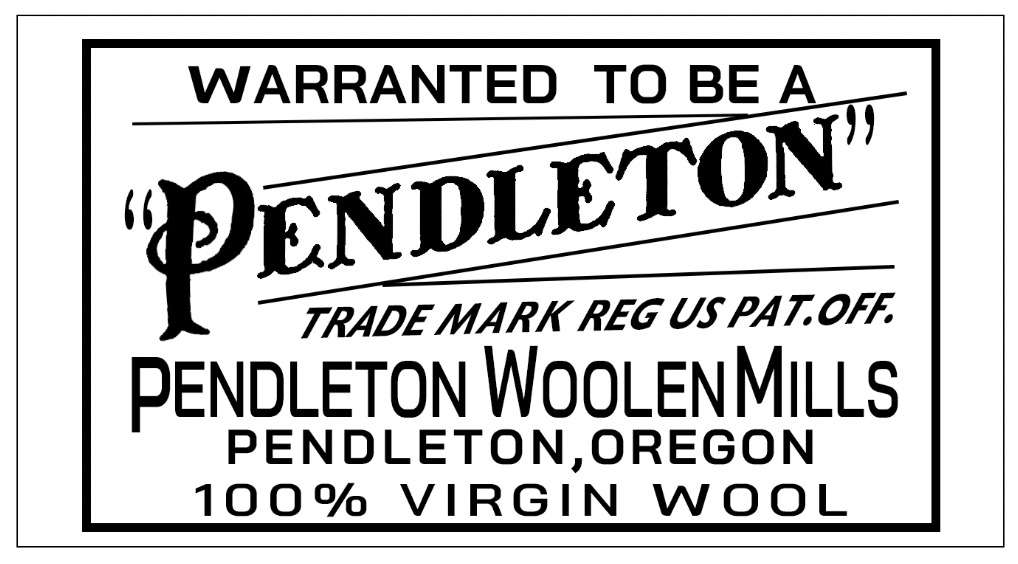

1940s - Early 1950s


Mid - Late 1950s


1960s
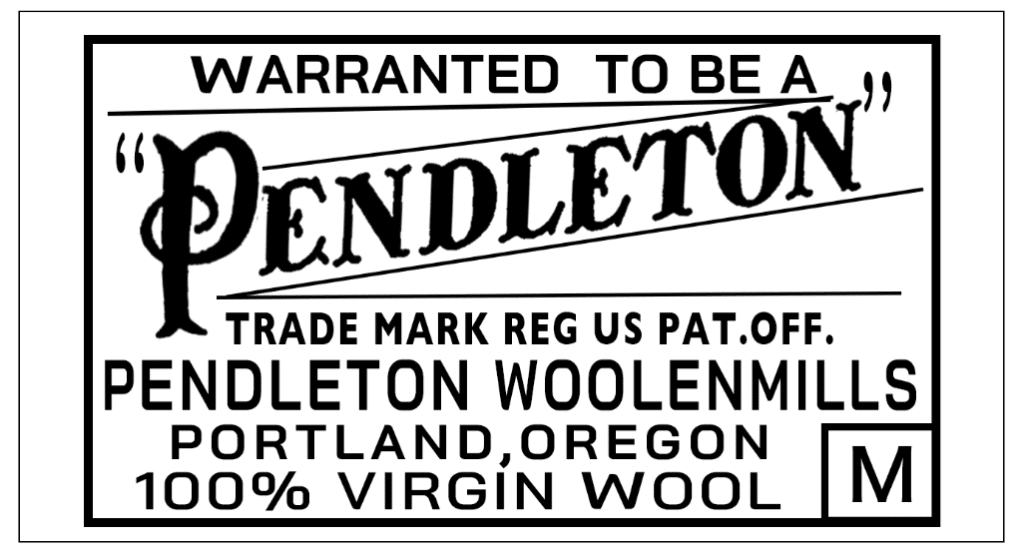

Mid 1960s


1970s - 1980s


1980s - 1990s
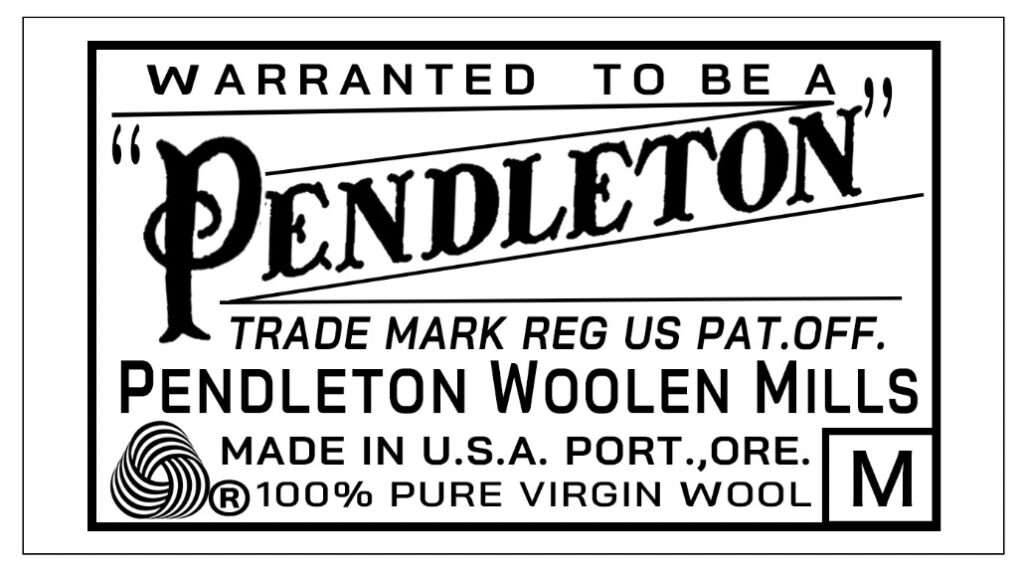



1990s


Late 1990s -

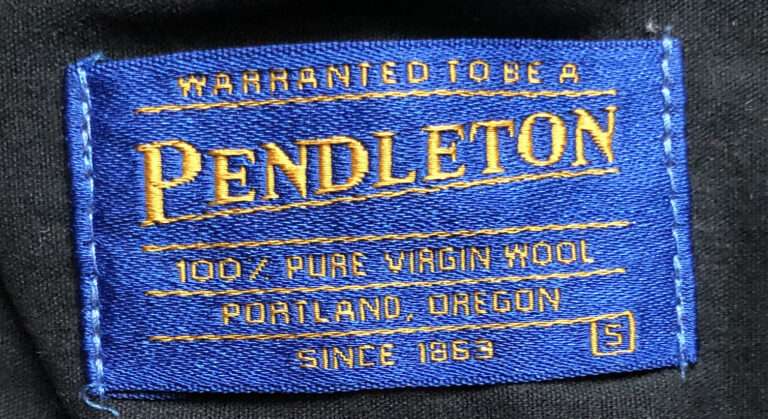

The history of sheep breeding.

